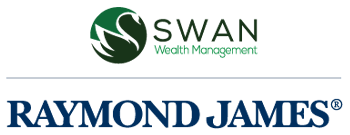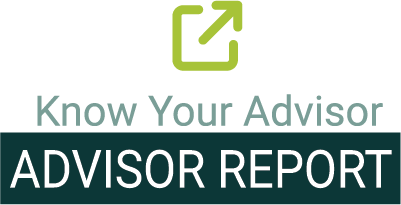401(k) to IRA Rollover: Everything You Need to Know
If you’re moving from the US to Canada or you’ve already moved, you may be wondering about the implications of a 401(k) to IRA rollover and whether it’s something you should do. At SWAN Wealth Management, many of our cross-border clients are concerned about having access to their 401(k) when they move or retire to Canada. If you’ve already moved or are planning a move, then this information applies to you.
This article is for educational purposes only. Speak to a qualified tax professional and financial advisor about your particular situation as this can be complicated.
Summary of Key Points:
- Both 401(k) and IRA plans have advantages and disadvantages.
- If moving to Canada, you can keep an IRA by working with a dual-licensed financial advisor.
- You can aggregate RMD’s between your IRAs, which may make planning easier.
- If your current employer offers a 401(k) plan, it is most often beneficial to contribute.
- You can rollover a 401(k) to an IRA and keep the tax-deferred status.
- Transferring a 401(k) to an RRSP may result in double taxation. You should consult with a cross-border accountant before you do this.
- You can transfer an IRA to a Roth IRA. But please consult with your tax professional to see if this is the best option.
What exactly is a 401(k) to IRA rollover?
A 401(k) to IRA rollover is when you move funds from a previous employer’s pension plan, or several 401(k)s, into an IRA. You might do this to simplify your situation. However, there are some rules you must follow that may be specific to the current custodian of your 401(k) plan. So read this article carefully, and please do consult with a cross-border financial advisor before taking action.
Reasons Why You Might Roll Over Your 401(k) to an IRA
There are five main reasons why you might consider a 401(k) to IRA Rollover once you have moved from your previous employer. They include the following:
- To have more investment options.
- To consolidate multiple retirement accounts and better manage your investments.
- To prevent complexities for beneficiaries.
- To ensure your investments are actively managed and not frozen.
- To provide estate planning benefits.
IMPROVE INVESTMENT OPTIONS
You might rollover your 401(k) because you find that the investment options with your 401(k) are limited. For example, the options to take the money out of company plans for beneficiaries may be more limited with a 401(k). Speak to the plan administrator before you make any decisions.
CONSOLIDATE INVESTMENT ACCOUNTS
If you live in Canada and still have your 401(k) in the US, you may consider rolling over your 401(k) to consolidate your accounts rather than having multiple 401(k)s from previous employers. By consolidating your accounts, you have fewer account statements to keep track of and fewer beneficiary forms to update. It can be much easier to manage and rebalance investments when you’ve consolidated your accounts.
REDUCE COMPLEXITY FOR BENEFICIARIES
Doing this will also reduce the complexity for beneficiaries when you pass. Imagine how difficult it would be for your children or other beneficiaries to figure out which accounts are active from multiple employer-sponsored retirement plans.
You also may have overexposure to some investments and underexposure to others if all your investments aren’t held with one advisory team. You can see how consolidating your accounts and having them managed by one advisory team would allow for more effective portfolio management.
ENSURE YOUR ACCOUNTS ARE ACTIVELY MANAGED
Once you move to Canada, your 401(k) will likely be frozen and not actively managed. This is because your advisor is not licensed to work in Canada and it is against the Security Exchange Commission, SEC guidelines for the investment company to provide advice to non US resident clients.
PROVIDE ESTATE PLANNING BENEFITS
Finally, there may be estate planning benefits to rolling over a 401(k) to an IRA. One benefit of doing this is the ability to leave separate accounts to different beneficiaries. This allows clients to name a trust as their IRA beneficiary, which helps to stretch the distributions. Unlike IRAs, many of the 401(k) plans require non-spouse beneficiaries to distribute all of the inherited funds sooner—often in just five years rather than ten years. Speak to your plan administrator to learn your options.
A solution when a non-spouse beneficiary (such as your children) is left money in a 401(k) is they can make a direct rollover of their inherited plan funds to an Inherited IRA as long as it is completed by December 31st of the year after the original client dies. They can then have the 10 year rule of the IRA if the 401(k) was limited to 5 years. This requires an additional step and maybe forgotten or not considered.
Remember to consult with a cross-border accountant or cross-border lawyer before you consider utilizing trusts for beneficiaries. If a beneficiary inherits through an estate, the direct rollover option is not available.
There are Benefits to Keeping Retirement Funds in Your 401(k)
Although there are some potential benefits of keeping retirement funds in your employer-sponsored retirement plan, the IRA rollover is often the preferred choice for clients. One advantage of keeping your retirement funds in your 401(k) is that certain 401(k) plans have exceptions to the 10% early withdrawal penalty. For example, if you have stopped working for the company you may be able to take money out of your plan at age 55 instead of waiting until age 59.5, without paying a 10% penalty. This is specific to various employers so you would need to check with your plan administrator. Some 401(k)s may also provide ERISA (Employee Retirement Income Security Act) creditor protection. ERISA offers very strong creditor protection, and safeguards covered funds from most creditors. IRAs don’t receive creditor protection under ERISA but do receive creditor protection under state law. It may be equivalent protection but is not always the case.
Should You Roll Over an IRA to a Roth IRA Before Moving to Canada?
One question that often comes up when I speak to cross-border clients is whether one should roll over an IRA to a Roth IRA before moving to Canada.
Sometimes clients ask if they should at least roll over a portion of their 401(k) to a traditional IRA and a portion to a Roth IRA as a Roth Conversion. You might do this to minimize the tax you pay on the money you take out of an IRA once you are a Canadian tax resident.
As this is an important decision, you should consult with a cross-border accountant before deciding if this is a good option for you.
401(k) to IRA Rollover Limit
A 401(k) plan’s annual contribution limit in 2021 is $19,500 or $26,000 if you are age 50 and older. An IRA limit in 2021 is $6000 and $7000 if you are 50 and older. However, there is no limit to how much you can roll into an IRA from a 401(k)*. It is considered an in-service rollover if you are looking to transfer a 401(k) to an IRA while you are still working. Many employers allow this at age 55 and older.
* This is the case as long as you are no longer working for the company for which you want to transfer the 401(k).
Can You Roll a 401(k) into an IRA without a Penalty?
Distributions from a 401(k) are limited before you are 59.5 if you are still working with the company. But once you leave your job, regardless of your age, you will have access to your 401(k) funds and can decide what to do with them. Remembering if you were to cash out the account and not do a rollover you would pay taxes and a potential penalty.
You may also have an option to do an in-service rollover if you are over the age of 55 and still working with your 401(k) employer.
INDIRECT ROLLOVER AND 60-DAYS ROLLOVER
It is possible to roll over a 401(k) to an IRA without penalty. If you are over the age of 59.5 or separated from service, you must deposit the funds from your 401(k) plan to another retirement account within 60 days if it is an indirect rollover.
However, it is best to move the money directly from one institution to another because there are no 60-day rule or mandatory 20% withholding taxes.
Keep in mind an indirect rollover or 60-day rollover is where the distribution is made payable to you. In comparison, a direct rollover means you, as the account owner, never have access to the funds.
Be aware of the once-per-year rollover rule. Roth conversions are not subject to the once-per-year rollover rule.
For your reference, here is the IRS Rollover Chart, which shows what can be rolled over and where.
Transferring a 401(k) to an IRA while Employed
The main reason you may transfer a 401(k) to an IRA while still employed is to consolidate your retirement plans from previous employers. This may make it easier when planning required minimum distributions (RMDs).
Consider this example:
Peter has three IRAs
- IRA #1 RMD = $ 5,000
- IRA #2 RMD = $ 3,000
- IRA #3 RMD = $ 2,000
- Total RMDs = $10,000
Please note that it is OK to aggregate IRAs—meaning you calculate the RMD from each account but take it from just one account.
Example #2: Jane has three 401(k)s.
- 401(k) #1 RMD = $ 5,000
- 401(k) #2 RMD = $ 3,000
- 401(k) #3 RMD = $ 2,000
- Total RMDs = $10,000
It is Not OK to aggregate 401(k)s—the general rule for plans is that each plan’s RMD must be calculated and distributed separately.
If you are currently employed and have the option to contribute to a 401(k), it is usually in your best interest to contribute. It provides an easy way to save money for retirement because it is taken off your paycheck before your income taxes are calculated or after income taxes are calculated for a Roth 401(k). In addition, many employers offer matching contributions. This is essentially free money added to your retirement savings.
Moving to Canada: Should You Transfer Your 401(k) to an RRSP?
Before considering transferring your 401(k) to an RRSP, you should speak to a qualified cross-border accountant. The reason is it may result in double taxation. An easier solution would be to roll over your 401(k) to an IRA and have a dual-licensed financial advisor manage your account.
There are many factors to consider when planning for retirement. Adding the complication of moving across the US/Canada border and you may find you are more confused than when you started researching. Fortunately, if you work with a qualified cross-border financial advisor and cross-border accountant, you can avoid the many pitfalls and enjoy your lifestyle.
If you’re Canadian or American and planning to retire across the border to Canada, our article on Cross-Border Retirement planning will help you.
Next Steps
If you’re planning a cross-border move or you’ve already moved from the US to Canada and need help simplifying and optimizing your finances, then please get in touch. At SWAN Wealth, we specialize in cross-border financial planning and wealth management. We would be happy to ensure that you’re onside with the IRS while protecting your investments and retirement assets.
More Cross-Border Financial Planning Articles & Guides
If you’re planning a cross-border move, these articles and guides will help you simplify your move and make sure you’ve got everything covered.
The Ultimate Financial Planning Resource for Dual Citizens or Green Card Holders Living in Canada
Retiring to Canada - A Financial Planning Guide
Financial and Tax Planning for US Citizens Living in Canada
Canadian RRSP Facts for Dual Citizens, Expats and Canadians
About the Author
Tiffany Woodfield is a dual-licensed financial advisor and the co-founder of SWAN Wealth Management, along with her husband, John Woodfield. Tiffany specializes in advising clients who live both in Canada and the United States and need to simplify their cross-border financial plan, move their assets across the border, and optimize their investments so they can minimize their tax burden. Together Tiffany and John Woodfield, CFP and Portfolio Manager, help their clients simplify their cross-border finances and create long-term revenue streams that will keep their assets safe whether they live in Canada or the US. Click here to schedule an introductory call with SWAN Wealth Management.
Schedule a Call
Book a 15-minute introductory call with SWAN Wealth Management. Click here to schedule a call.




